Riding the Gebiomized Stride
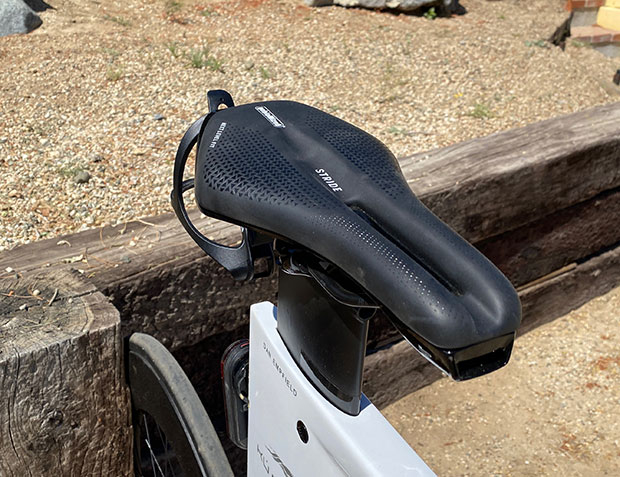
Two roughly 7 year old boys are at the breakfast table. One says to the other about Life Cereal, “Give it to Mikey. He won't eat it he hates everything.” Mikey is the (estimated) 4 year old brother who hates everything. “He likes it!” is the punchline of the 1972 TV commercial and that’s how old you have to be to remember this (although you can still buy Life Cereal). The ad really connected and “Mikey Likes It” became a cultural meme of the day (my sophomore year in high school).
About bicycle saddles. I’m Mikey. I hate everything. Furthermore when it comes to road saddles things have really gone to heck in recent years. I'm not alone! I visited a major bike brand last week and I spied the bike the resident engineer – a fit and accomplished rider – uses to commute to work. Nice bike and nice saddle, but the saddle (unlike the bike) was about a decade old and beaten to death. (Bikes come and go but saddles remain.) A couple of days later I was on the phone to the fellow I consider the dean of bike engineering and related this story. He said that he and his wife each are riding saddles on their brand new bikes that are between 15 and 20 years old (even though his company makes a line of saddles). Me? I’m riding a 15 year old saddle on my Cervelo R5 and another 15 year old saddle on my OPEN WI.DE gravel bike. One of these days perhaps and enterprising saddle maker will awaken to the virtues of saddles made in a bygone era that are actually a joy to ride.
It is against this landscape that I chose to test a Gebiomized Stride saddle, one of a pair of new saddles for tri that I found intriguing. (The other test is imminent and that saddle was designed by a Slowtwitcher).
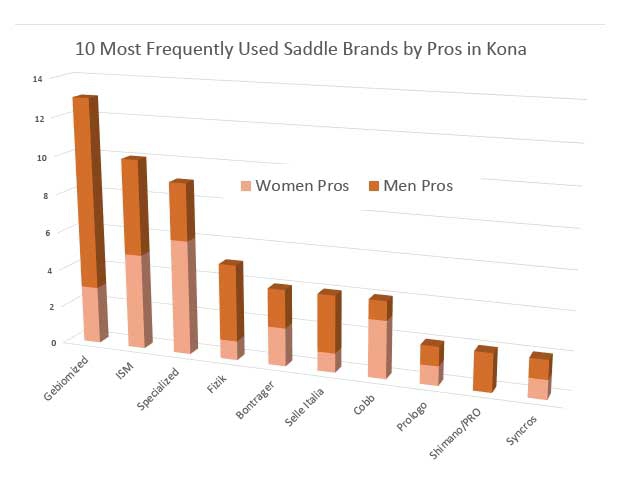
The Stride is not a road saddle. (Too bad, because I’m on the hunt for one of those.) It’s a tri saddle and the reason I’m testing it is because it was the most used saddle among the pros at the most recent IRONMAN World Championships. It was used both by men and women.
First, about Gebiomized. It’s a German company and it’s pronounced jeh BY oh mized among most native English speakers, and geh BEE oh mized (hard G) if you’re in Germany. There have been 3 bike fit tooling paradigms that have caught on since the turn of the century: X/Y adjustable fit bikes; motion capture systems (e.g., Retul); and pressure mapping. Gebiomized is the big enchilada in that last category. Bike fitters will use Gebiomized systems to help prescribe saddles; footbeds and shoes; armrests and really any place you place your weight. But it has gone further and parlayed what it knows about how pressure is displaced. If you know, based on thousands of datasets, how people tend to most often ride successfully on a saddle, you have a head start in making that saddle. Hence the line of saddles Gebiomized sells. This company makes a line of footbeds as well.
One of two things was true during this last IRONMAN championship event: either Gebiomized was very successful at Jedi Mind Control and convinced all these elite riders to fit these saddles to their bikes; or the saddles work. I’m willing to accept either explanation. But if you’re riding between 300 and 600 miles per week, month in and out, it’s not enough to convince someone’s brain. Mind control is one thing, but keister control is another. Convincing someone's keister that a saddle is comfortable (when it is not) is a tall order even for a Jedi. The proof of the pudding (as we say) is in the riding.
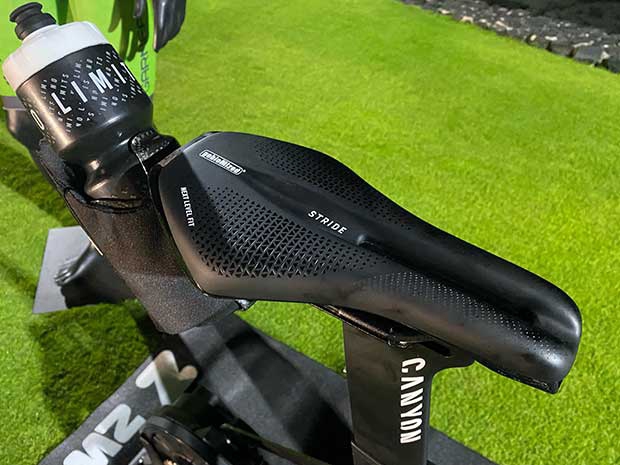
As I needed to test a few things anyway (Quintana Roo X-PR, Profile Design 43asc, that notoriously interesting bike by KÚ) I decided to plop the Gebiomized Stride aboard as one of a pair of saddles I tested. For reference, my chosen saddle has been the (discontinued) Profile Design Tri Stryke (speaking of 15 year old saddles), and I keep a stable full of these so that, if nothing better comes along, I will at least have enough to last until I die. Boat anchor though it may be, the Tri Stryke is a saddle that I can live with. Though legions of triathletes successfully ride split nose saddles I never could, as those twin protrusions sit right under my ischial tuberosities (sit bones) and play heck with my hamstrings (which originate at that location).
Skip the the end: Mikey likes it! Let’s not retreat to irrational exuberance. Mikey doesn’t actually like any tri saddle, even the Tri Stryke. Mikey (me) can reach a détente with certain tri saddles and the Stride is now one of the very, very, very few saddles that meet the high bar of a person who “hates everything.” I hope you recognize a trend here, with the Stride and many other saddles popular among the pros: These are not split nose saddles. You ride on top of them, rather than in front of them. Yes, your soft tissue connects the saddle and the benefit of split nose saddles (if you ride them the way the pros do) is that you’re riding commando. You hang your sit bones on the noses and the rest of you is like a dog with it head out the car window. There’s virtue in that, but, bear this in mind: Your weight is going to be resting somewhere, on some part of your body.
Note that this saddle is manufactured by Syncros, which is a Scott Sports brand (which is why you find Syncros saddles on Scott bikes). Syncros is becoming like Specialized in that the saddles are very highly regarded in their own right and the Belcarra looks curiously like the Gebiomized Stride because both saddles are made atop the same shell. Gebiomized augments the Syncros design by spec’ing its own durometer foam throughout the saddle, which is the secret sauce that makes the Stride the saddle it is. I do believe a new tri saddle has finally blasted me off my old Tri Stryke.
Gebiomized sells road saddles as well. Would I like these also? I don’t know. Remember, I hate everything. Here is more info from Gebiomized on its saddles and, like KÚ bikes, and like the next saddle I’m going to review, bike fitters are becoming a more important part of the sales and service channel.


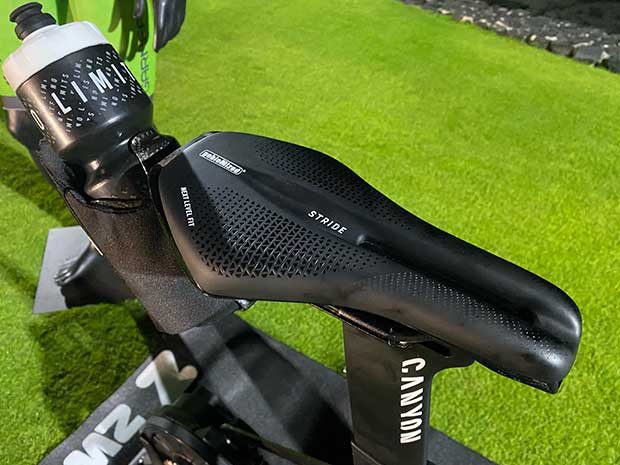
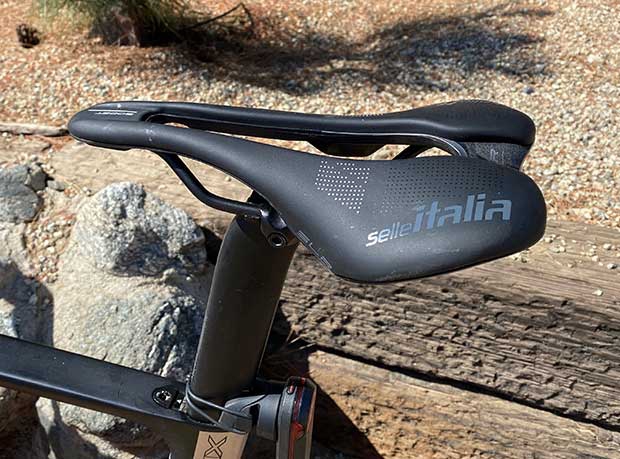
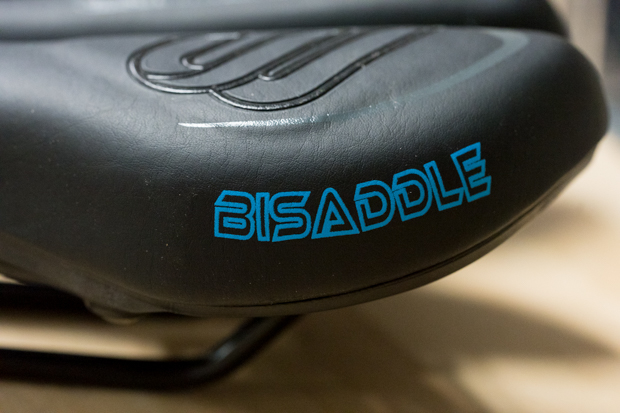
Start the discussion at slowtwitch.northend.network